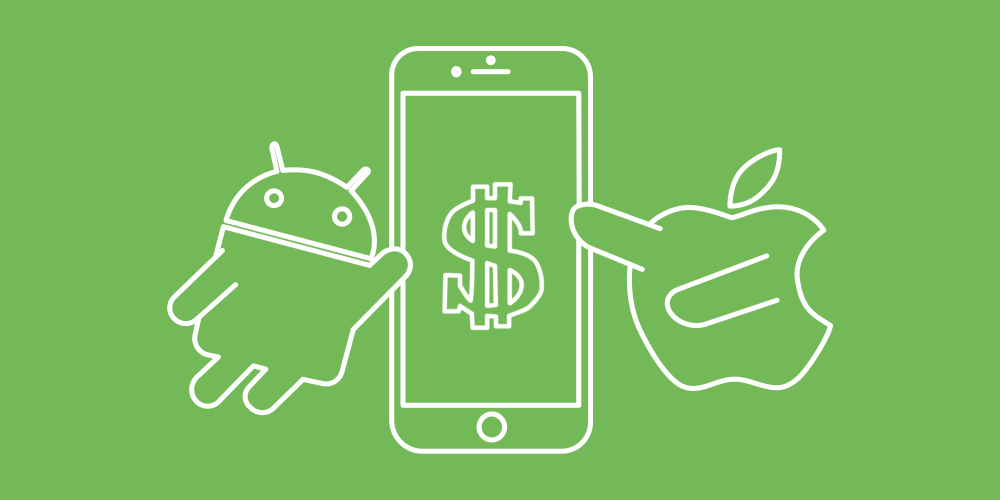How to place a mobile offer in affiliate networks. Tips for advertisers

Mobile offers are considered a separate vertical in affiliate networks. Due to the fact that they are valid only for mobile traffic and mobile devices, these offers differ from others and they have some certain features. Admitad Academy suggests examining this topic and looking into details at what advertisers should consider while creating an offer and which tools will help them.
Making customers use an application is not so easy. The companies usually attract them by their own capacities, but if the business is planning to expand and attract a large number of users, it is better to cooperate with affiliate networks which are ready to provide advertisers (mobile applications which are ready to place an offer) with many publishers who are ready to drive traffic to the applications.
Alright, today we will talk about the following:



Pricing
The pricing models in affiliate networks describe the concept based on which advertisers pay publishers for driving traffic.



Hard KPI and Soft KPI
KPI (Key Performance Indicator) — the indicator reflecting the success gained while reaching some goal. In affiliate networks KPI is taken as “indicator” which notifies about the traffic quality and it provides advertisers with the opportunity to disconnect the channels, ad spaces, and creatives which do not correspond to the required traffic quality.
It is common that it takes pretty much time to monetize applications: it can take several days to make the first purchase after installing an application. Meanwhile, a publisher needs to get the reward as soon as possible as he will use this money for the following advertisements. Here comes the problem — the advertisers aren’t ready to pay unless they see at least some potential monetization of driven traffic, but a publisher needs a payout as soon as possible.
That is why KPI is needed. In fact, it is a share of driven traffic which performed some additional action apart from the main one (most often it is the application installation). Here is an example: there is some offer of a mobile game and the advertiser is ready to pay for its installation (CPI model). The advertiser knows that a real target player usually reaches some certain level or will pay some money for upgrading the character after playing the game for a couple of weeks. The advertiser also carries out a research which results show that each user who reaches 10th level is a real player who can be potentially converted into a customer. Therefore, the advertiser sets the KPI: installations of the game attracted by the publisher will be confirmed providing that 30% of players reach level 10. If conversion of installations into players is lower than 30%, the rate can be reduced (or the reward can be not paid at all). This is how the advertiser can cut off paid traffic which potentially will not bring any profit.
Hard KPI — obligatory terms — if a publisher doesn’t fulfill them, the action won’t be confirmed. Soft KPI — these terms can vary.
For instance, the payment depends on the conversion of installations to the paid orders:
 Lower than 2% — the publisher won’t get paid
Lower than 2% — the publisher won’t get paid
 2-3% = 1 US$ per install
2-3% = 1 US$ per install
 3-4% = 1.05 US$ per install
3-4% = 1.05 US$ per install
 4-5% = 1.20 US$ per install
4-5% = 1.20 US$ per install
 Over 5% = 1.5 US$ per install
Over 5% = 1.5 US$ per install
If you launch the application for an online shop or service which main task is to be a useful and convenient platform for making purchases, then you can choose not only CPS model, but also CPI+KPI. For example, if the application is designed for books purchase and the advertiser is working on the CPS model, there can be several types of rewards to publishers: % of the sum of the first purchase, fixed amount for the first order or % of the sum of purchases within some period (a week or a month). If you prefer to pay for application installation (CPI), then you can set conversion of installations to purchases within the first week after installation as the KPI.
KPI must be real and achievable. For example, if you set the KPI for a gaming application to “kill the boss” within two days, none of publishers will join your program and drive traffic to it simply because it is a waste of time and money, because no matter how cool your game is, few gamers will be able to reach the final level and it is even less possible that one can kill a boss in two days. That is why we recommend to evaluate the average user behavior and set the results based on it. Decide which indicators you will look at while assessing the traffic quality in advance and add these indicators in KPI.
How to place an offer
This is how the whole process of placing an offer looks:





Tracking integration
First of all, you need to choose a mobile tracker and integrate with it. Its task is to monitor the traffic sources and users actions after installing the application as well as to attribute the actions to the publishers who attracted the user.
There are many different trackers with various features. All of them include the basic set of features: attribution, analytics, performance metrics. Here is the list of top services which are used by advertisers in the affiliate network Admitad:
Appsflyer. Paid service with many solutions. The special advantages are help in several languages, user-friendly and transparent interface so that even a novice will easily understand how to use it. Moreover, they provide fraud preventing analytics (don’t forget that you want to pay only for traffic of high quality). The project blog is also worth mentioning — apart from company news, there are ideas, lifehacks, and tips on how to promote mobile applications.
Adjust. It provides similar features as Appsflyer — tracking, fraud preventing analytics and it is also paid. The service has several useful information resources (cases, glossary, webinars, analytical reports, blog).

Search optimization
The higher the application is in search, the more installed it will be. Don’t ignore the keywords, it is better to write as many as possible. The more keywords you use, the better your organic search will be and thus it will be easier to find your application. It is better to do it right at the beginning because ASO (App Store Optimization) doesn’t work in one day, but has accumulative effect. Title, keywords, descriptions — these characteristics should describe the application in all details and from all sides so that it will be brought to the first place of search even on the weirdest users queries. If companies can’t carry out search optimization by themselves, they can hire agencies which will be able to do it.
And the last but not the least: all texts (even SEO) are written to be read by people, not for machines. If the application is in top of search but its description can be understood only by the search engine, publishers will not join such offer.
Work on rating
Users of mobile applications above all look at rating and review. Based on experience, we can point out that rating impact on conversion (of application views in the application store to its installation) is approximately 80–85%.
Rating demonstrates if the application is user-friendly, understandable, interesting and popular among users. The reviews show the main issues which users can face: if a user cannot install it because of the old OS, if the application lags (issues with layout, buttons or any other work processes and so on), if the there are anything that can be improved regarding update (for example, additional features that may help). Users note if the reviews and comments are unanswered or an automatic bot answers them with similar replies and definitely it can influence their opinion about the application and the developer. Therefore, we would advise answering the comments: negative comments should be elaborated, problems should be solved, and positive reviews should be also answered at least with a simple “thank you”.
If you have low rating, we can share a lifehack with you: you can renew it iTunes by releasing a new version of the application. But it won’t solve the initial issue so work on problems and bugs, listen to your users’ opinion. Mention upgrades when answering negative comments thus users will know that the issue will be solved soon and they won’t delete the application.
Never cheat nor buy reviews! Users are not silly and they can easily detect the fake comment. It is better to ask your existing users to review the application, of course, you will have fewer reviews but they will be real. Make sure that the request to rate the application appears after some time of using the application, it is unreasonable to ask users to review it right after installation, the request can be set after the user opens it some certain number of times. It will increase the number of positive reviews: hardly users who don’t like the application will keep using and opening it.
Reviews and rating are essential for publishers as if they notice that their target traffic “goes away” when users see only two stars in app store and loads of negative comments, they will just stop working with the program no matter how high the rates are.
Elaboration of offer conditions
Offer description is very important both for advertisers and publishers. If any disputable situation occurs, the managers of the affiliate network will refer to the conditions indicated in the offer as publishers rely on these rules when joining an affiliate program. Therefore the terms mustn’t be ambiguous and confusing. The following parameters must be in the offer description:

KPI (Hard & Soft). It is necessary to mention that just in case of disputable situations, it is better to indicate not only the actions which will be paid for but also those which won’t be rewarded. You can also include undesirable traffic sources, unapproved creatives, installations to the devices with the wrong OS and so on.




Don’t forget to update offers and their description and provide special deals (deals, coupons, promo materials, sales — provide information about short-term sales in advance).
Traffic channels
We recommend testing the majority of channels. Much traffic of high quality can be driven from unexpected sources — there is a case when an offer of a pizza restaurant with delivery had loads of orders from adult traffic (content for adults), although usually this traffic type isn’t very welcome. Try the traffic sources but set some limits (for example, a publisher should attract 20 installations, and then the traffic will be checked). As we always say — analyze the statistics, you cannot launch an offer and then come in a month to check how it’s going. The more you analyze, the more opportunities you have to improve the effectiveness of CPA channel.
You manage the traffic flow which is driven by publishers. Expand the best channels and remove the unprofitable ones, test new ad spaces and types of promotions. Video traffic of high quality can be found on Applovin, and Snapchat is a trend now, but each month brings us more social networks, tools and other opportunities, so don’t miss them.
Different terms for each traffic source. It is better to pay different reward and set diverse KPI depending on the ad space and channel of promotion. If a publisher didn’t fulfill the KPI but he was very close to it, don’t hurry to disconnect him as maybe he is only developing the ad space and trying different traffic source, and when he finds the right one, he will show great results. Don’t forget about SubID: these tags will show which campaigns are ineffective and vice versa.
Monitor fraud. Fraud prevention analytics in mobile tracker will help to save the budgets. Manual analysis of traffic after fulfilling KPI will show if users are active, how often they open the application and so on. Paid fraud preventing services cannot guarantee the 100% effectiveness and you should check traffic also by yourself.
Be thoughtful while placing the offer, try to think over all details, and be ready to help the publishers and communicate with users. Track actions and analyze traffic quality as it also depends on how user-friendly your application is, its rating and reviews about it. That is why affiliate partnership will be effective only when all parties participate in the process.






